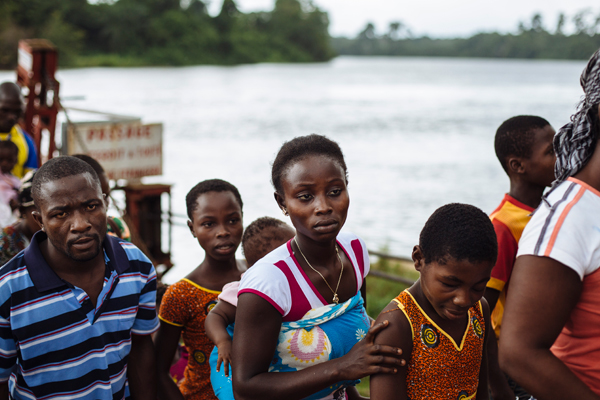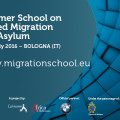Can we really “help them in their Countries”?

Côte d’Ivoire. Ivorian returnees queue for a health screening after crossing the Cavalla River. Credits: UNHCR/David Azia
As we have seen in previous articles, cooperation with third countries is a significant element on the European agenda on migration. Well before the peak of arrivals in Europe in 2014 and 2015, the EU Institutions had engaged in a dialogue with ACP Countries (Africa-Caribbean-Pacific) within the scope of the EU Global Approach to Migration and Mobility. Since its birth in 2012, this renewed intergovernmental dialogue between the European Union and ACP Countries focused on three main topics: visa policy, remittances and readmission policy; in 2015, trafficking of human beings (THB) and migrants smuggling was added to the list.
In order to provide this transcontinental dialogue with an operational branch, the International Organization for Migration (IOM), together with the EU and ACP Institutions, created an ACP-EU Migration Action with the mission to support ACP Countries – 79 Countries and South Sudan – in the creation and improvement of national asylum and migration systems. Fully funded by the EU (10th EDF) on the initiative of the ACP Secretariat and the European Union (EU) and implemented by the International Organization for Migration (IOM) (a 10 million euro budget spread over 44 months of activity), the Brussels-based office started working at maximum capacity right from the start: “As of today, we have received 56 requests for technical assistance”, claimed Olivier Grosjean, Programme Officer at the ACP-EU Migration Action. As Mr. Grosjean explained to Asylum Corner, only ACP Countries can benefit from the ACP-EU Migration Action’s support projects, but in contrast with all past experiences of this kind, it is not only governments who can request assistance but also civil society organizations working in the field of migration in ACP countries. The declared objective is to create multifaceted interventions to ensure synergies, maximize the impact of the Action activities and ensure future sustainability. The range of non-state actors that can benefit from the ACP-EU Migration Action includes diaspora, migrants, civil society organizations, as well as research and academic institutions and community or faith-based organizations.
Recently, the focus of the Migration Action’s interventions has shifted from remittances and visas to trafficking of human beings in countries of origin. The first ever request in THB came from Vanuatu in the Pacific and Senegal in the case of Africa, where the Action is about to kick off its technical assistance to support the Ministry of Foreign Affairs to develop a mapping of the zones at risk of irregular migration or of departure of irregular migrants.
However, many concerns are being raised around the increased interest on agreements between EU Member States and ACP Countries for migrant readmission purposes. Will the ACP-EU Migration Action be enough to ensure that countries of origin will be able to create the necessary infrastructures to readmit high numbers of migrants?




